
 Neko Senpai
Neko Senpai About C Group Revised Ver.!
Video of This Article
 Kamome Senpai
Kamome Senpai This is 8:01 video!
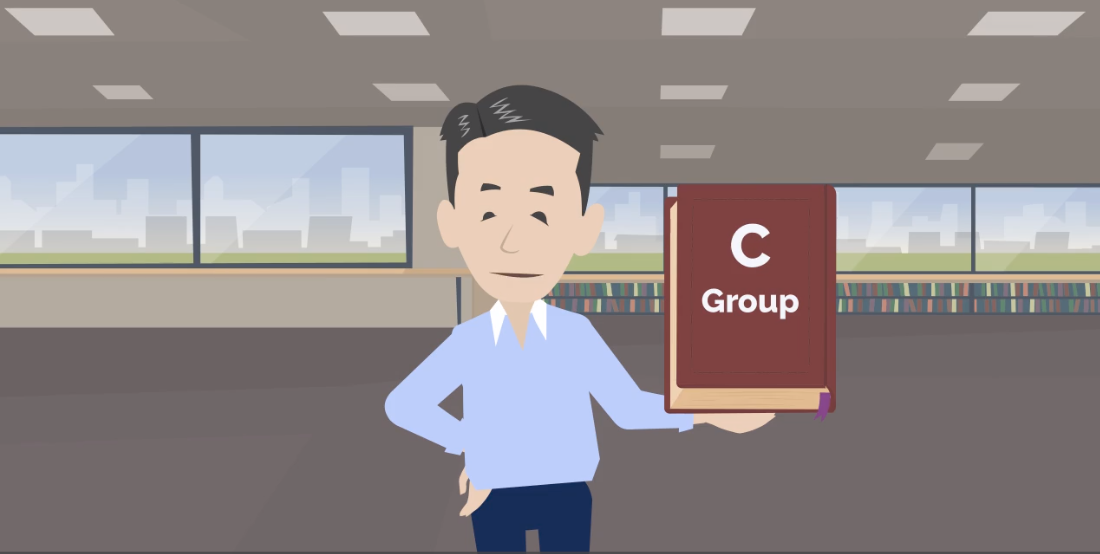
Hello, it’s IINO.
In this video, I will explain the C-Groups of Incoterms: CFR, CIF, CPT and CIP.
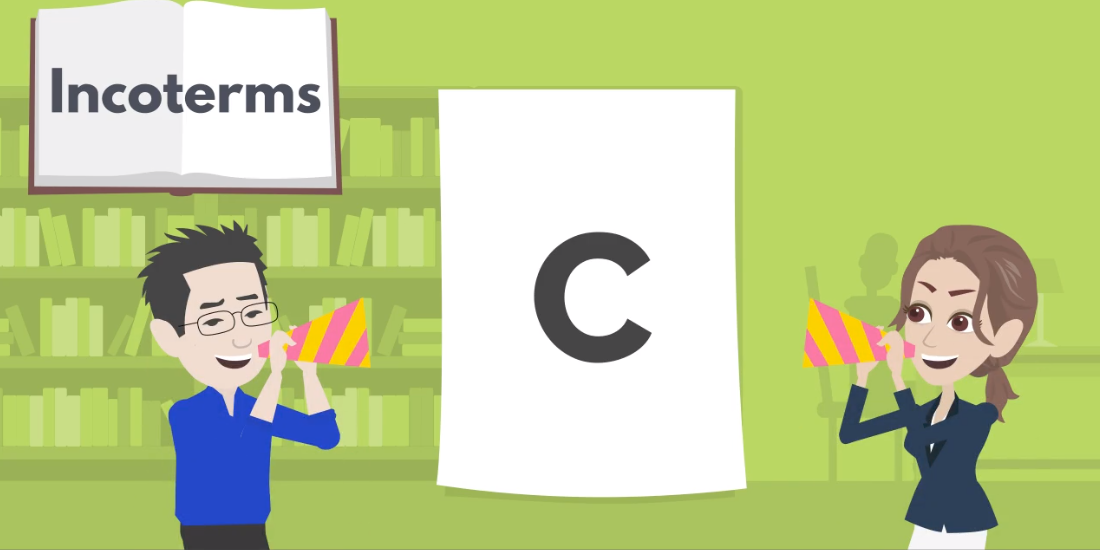
There are 11 Incoterms conditions, and they are classified into the following four acronyms.
E- Group.
F-Group.
C-Group.
D-Group.
In this video, we will focus on C-Group.
So, let’s get started.
About CFR and CIF

First, I would like to explain CFR and CIF, which are often used in practice.
CFR stands for Cost and Freight. It is sometimes written as C&F, but CFR is the correct abbreviation.
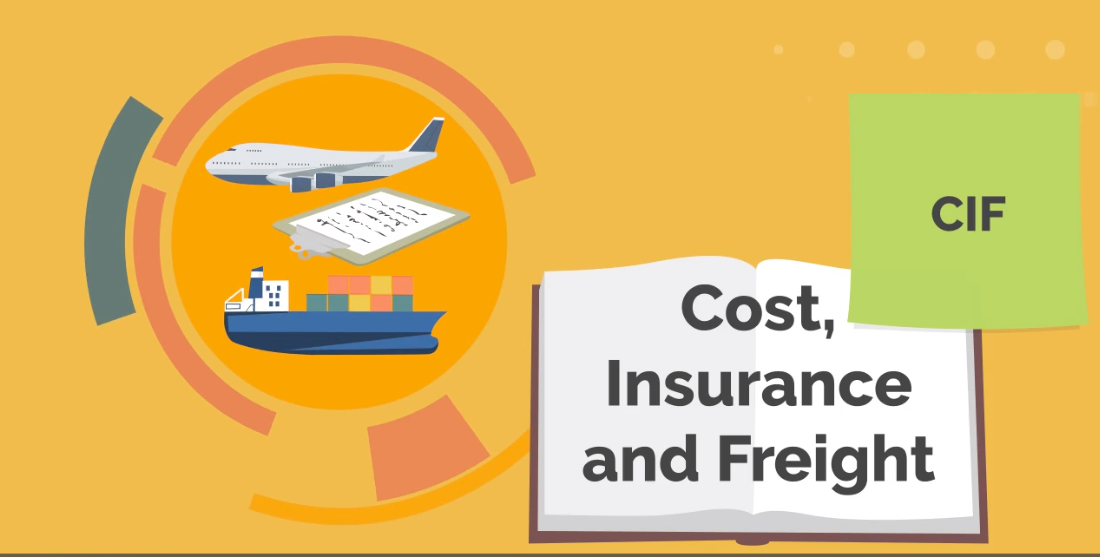
CIF stands for Cost, Insurance and Freight whose condition of delivery including freight and insurance.
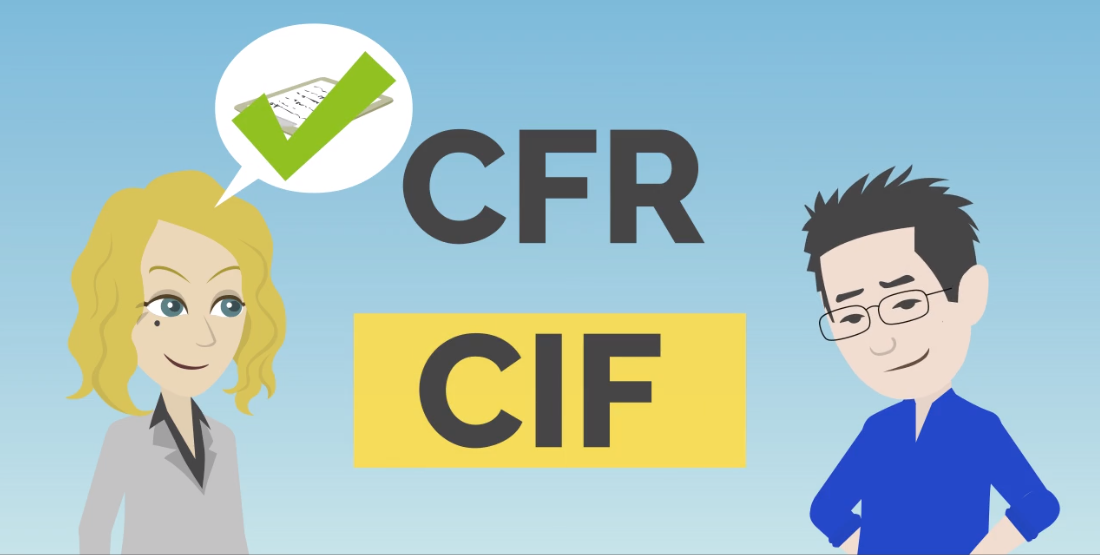
The difference between CFR and CIF is whether it includes insurance or not, and it is easy to remember since the “I” in CIF stands for Insurance.
In case that the exporter does not carry cargo insurance or the importer takes out insurance, it is CFR. And the case that the exporter takes out insurance and includes it in the cost, it is CIF.
Conditions of “Cost” and “Risk” of CFR and CIF
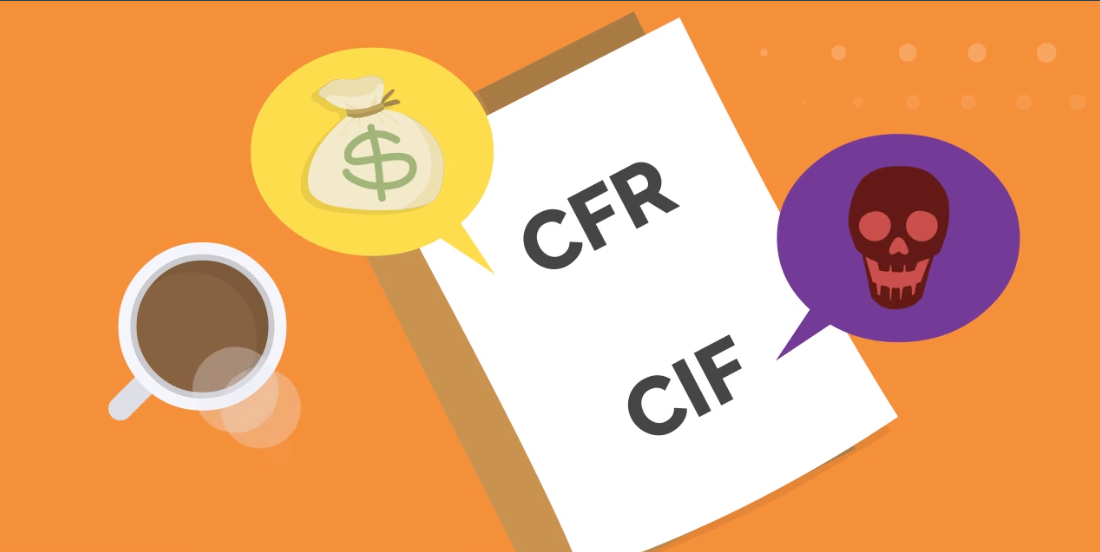
Next, let’s take a look at the conditions of “cost” and “risk” which are important in Incoterms, in CFR and CIF.
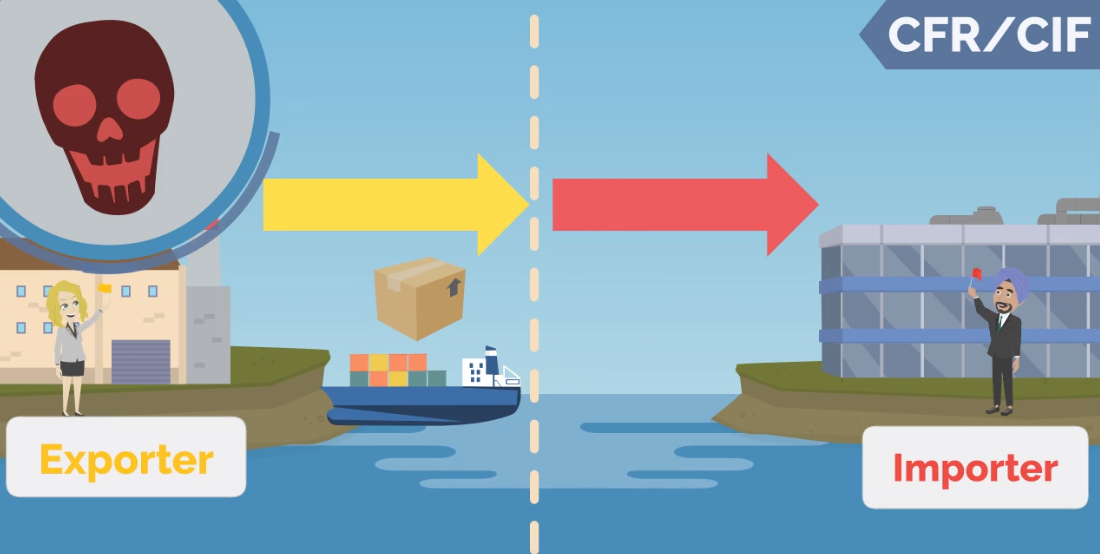
In terms of cost, the exporter bears “all transportation costs from the place where the cargo is picked up, to the port where it is imported.”
And as for the burden of risk, the exporter bears “the risk until the cargo is on board the ship at the exporting port”, and after the cargo is on board the ship, importer bears it.

CFR and CIF are characterized by a difference in where the cost burden and risk burden are switched.
It is important to note that the cost burden is borne up to the port of import, while the risk burden is the port of export.
Actual Transaction
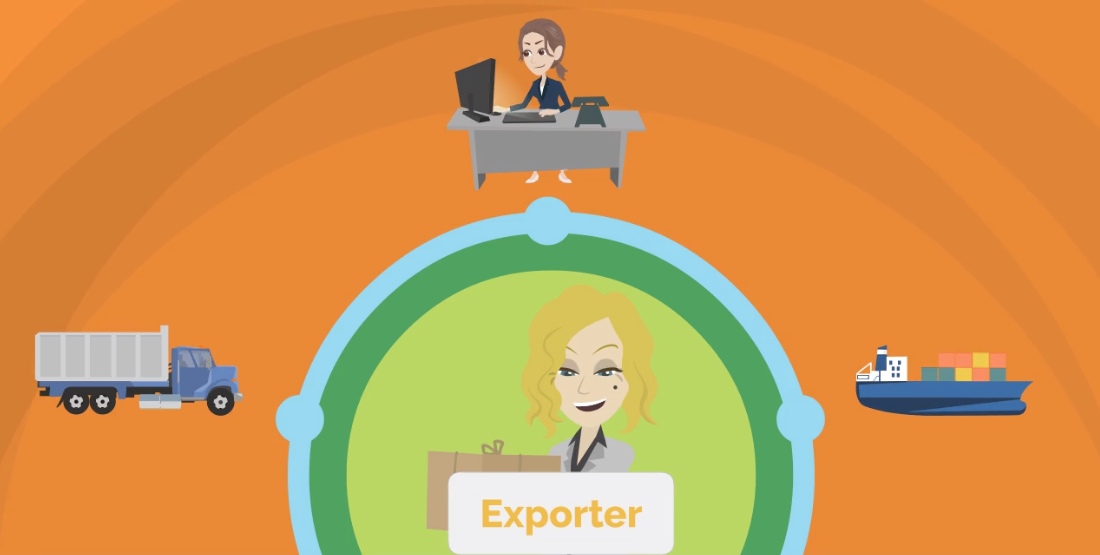
Let’s take a look at the actual transactions of CFR and CIF.
From the exporter’s point of view, in CFR and CIF, the exporter ships the cargo and requests the forwarder or other party to arrange for Booking, export customs clearance, trucking, and ocean transportation.
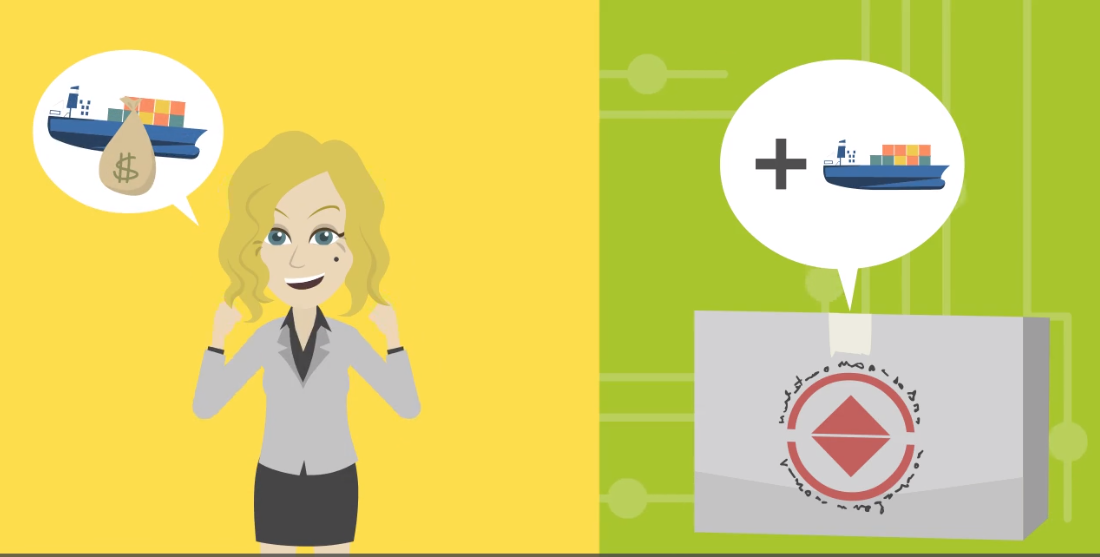
In CFR and CIF, the exporter pays the freight costs to the forwarder or shipping company first and then adds the freight costs to the unit price of the product and charges the importer.
Therefore, if the exporter is able to purchase the ocean freight at an advantageous price, CFR or CIF terms are often more advantageous to the exporter rather than FOB.

Other advantages of using CFR and CIF are, when the exporter’s own cargo handling volume is high, or has a strong business relationship with a forwarder for a particular region.
In many cases, if the exporter has a good relationship with the shipping company, he has competitive ocean freight rates.

On the other hand, in many cases, if the importer use CFR or CIF, the exporter is better at international transportation than the importer.
If you are doing import business with a country for the first time or unfamiliar transportation, you can leave it to the exporter and focus on domestic customs clearance and transportation for the importer.
From the Perspective of a Exporting Forwarder
Let me explain a little more from the perspective of a forwarder who is good at exporting.
For example, we are a forwarder in Thailand and export a lot of mangoes, durians and industrial goods every month.
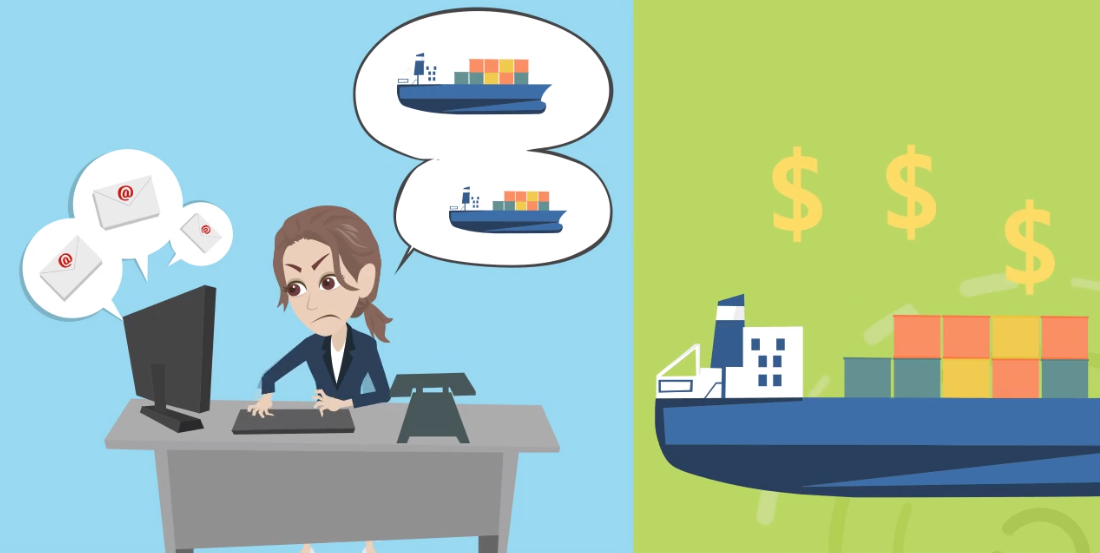
The details are explained in our company profile video.
Due to our large export volume, we have good relationships with each shipping company and are able to obtain beneficial ocean freight rates and space on a priority basis.

Therefore, we mainly offer good rates and space availability to Japanese customers in Thailand for Asia, Southeast Asia, North America, Middle East and Europe.
On the other hand, there is not much export cargo to Africa and South America, so the rates are very general.
About CPT and CIP

Next, I will explain CPT and CIP.
CFR and CIF are actually originally terms and conditions for conventional shipping. However, as a matter of business practice, they are also frequently used for container shipping and air transport.

In CFR and CIF, the burden of risk is transferred from the exporter to the importer when the cargo is placed on board the vessel.
However, in some cases, such as air cargo and CFS cargo, it is not known when the cargo is placed on board the vessel. In addition, there is that the burden of risk is unclear when an accident after the cargo is placed in the container yard.
In such cases, we use CPT and CIP.
Conditions of “Cost” and “Risk” of CPT and CIP
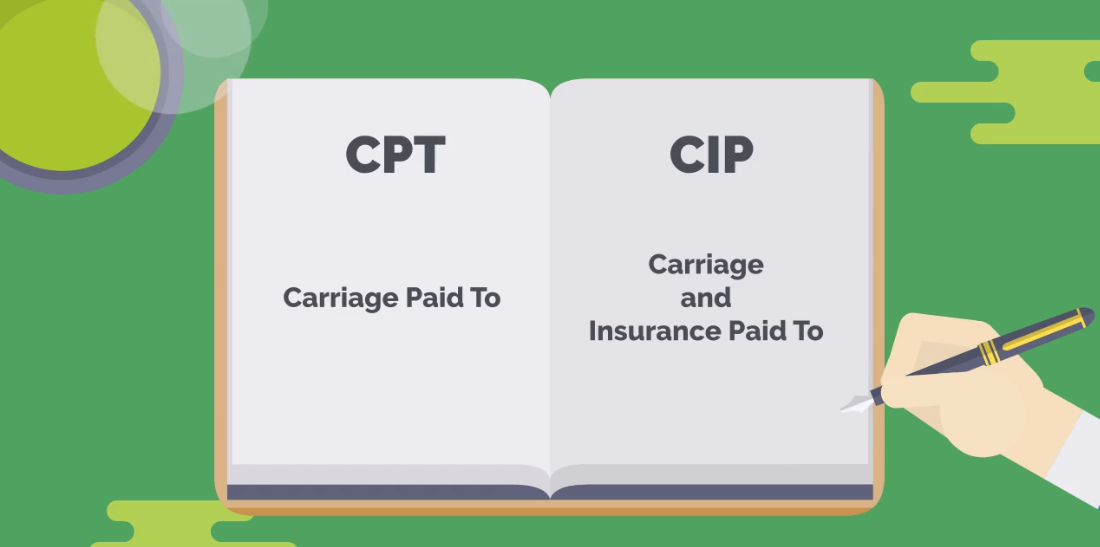
Let’s check the terms and conditions of CPT and CIP.
CPT stands for Carriage Paid To and CIP stands for Carriage and Insurance Paid To.
As with CFR and CIF, the difference is that CIP which with “I” is insured and CPT is uninsured.
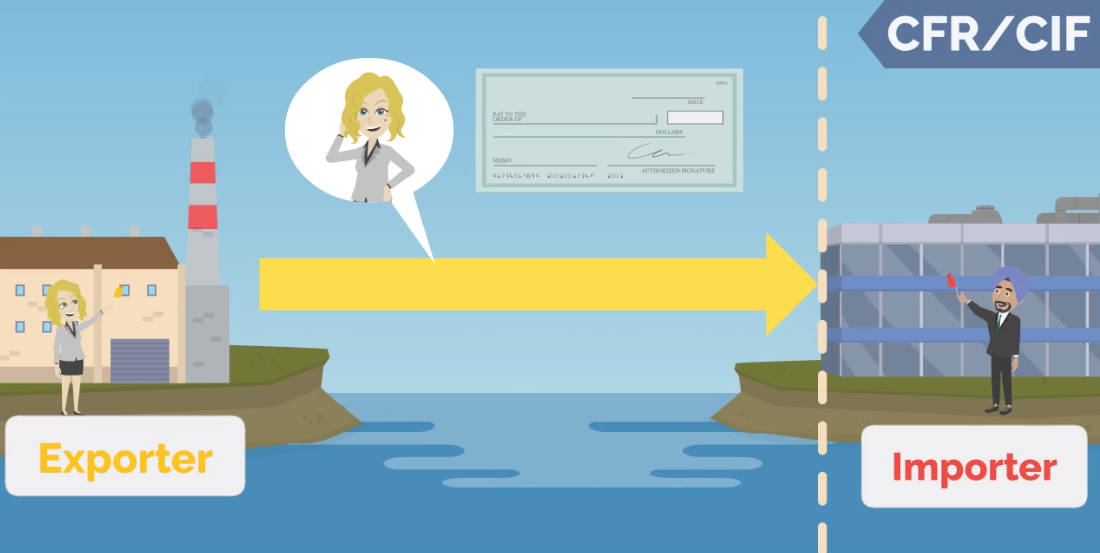
Let’s confirm the cost sharing for CPT and CIP.
In the case of CFR and CIF, the exporter bears the cost from the time the cargo is picked up to the port of import.
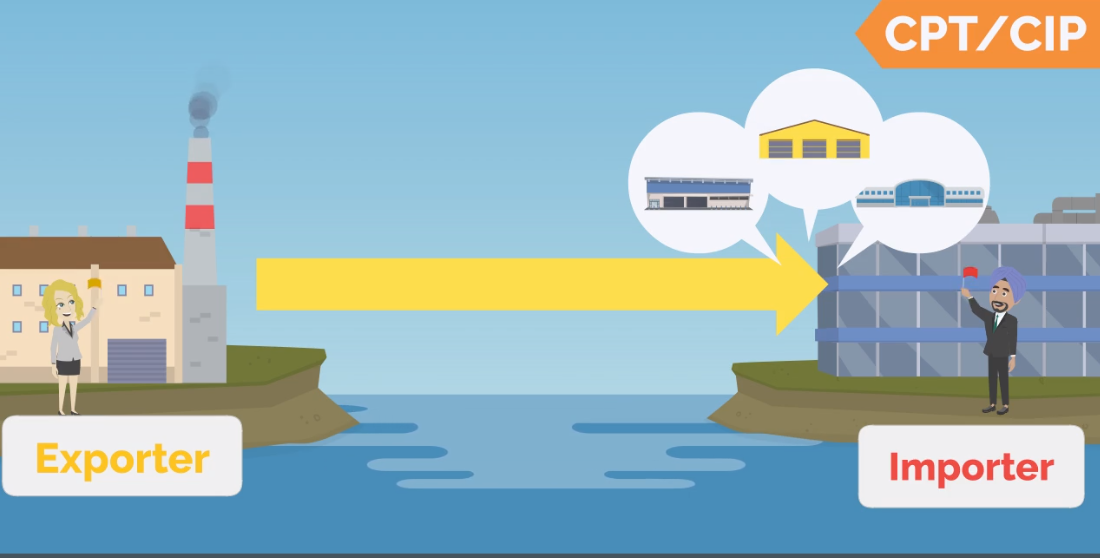
However, in CPT and CIP, the exporter’s cost burden is “to the designated destination.”
The designated destination is often CY, CFS and port or airport facility.

Next, I would like to talk about the burden of risk in CPT and CIP.
The risk of the cargo is transferred from the seller to the buyer, when the cargo is delivered to the carrier or warehouse designated by the seller (exporter).
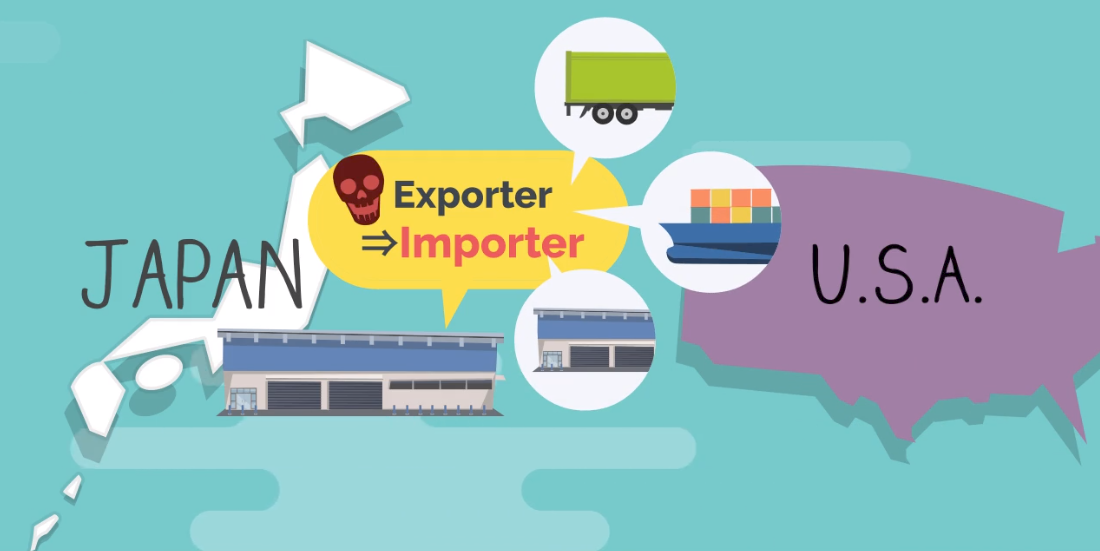
For example, in the case of a consolidated shipment from Tokyo to Los Angeles, the responsibility for risk switches to the importer once the cargo is delivered to the CFS at the Port of Tokyo.
After that, the importer is responsible for any problems that occur during bunning, in the yard, or the cargo is loaded onto the vessel.

Therefore, from the seller’s perspective, when CPT and CIP are compared to CFR and CIF,
-Increased cost burden; not to the port of import but to the designated destination on the import side
-Decreased risk burden; not at the loading on vessels but at the designated warehouse on the export side
Summary
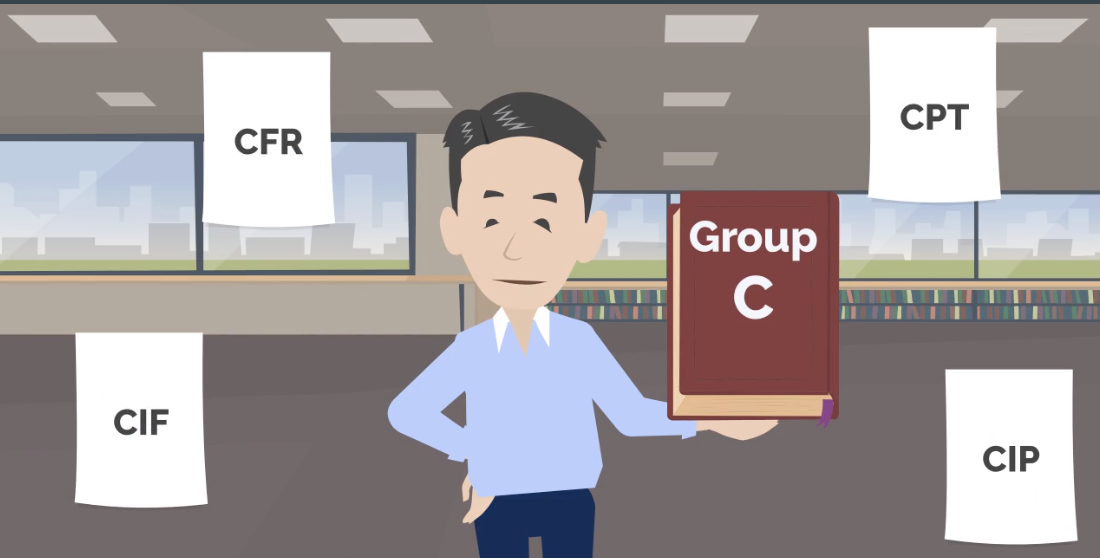
In this video, I talked about the cost and risk burden of Group C, CFR, CIF, CPT, and CIP in Incoterms.
I also discussed in detail the beneficial conditions for exporters and importers, when considering the volume of goods to be handled.

In particular, CFR and CIF are terms and conditions that are frequently used in trade practice, so it is important to have a thorough understanding of their contents.
If this video is useful to you, I’d be very happy if you could subscribe to my channel, like it, and share it on social media!
I’ll see you in the next video. Thank you very much!
Contact to IINO san

★Contact to IINO san★
—————————————–
FaceBook Page
https://www.facebook.com/iinosaan
Linked In Message
https://www.linkedin.com/in/shinya-iino/
Twitter DM
https://twitter.com/iino_saan
—————————————–
 IINO
IINO I’m waiting for your contact!









